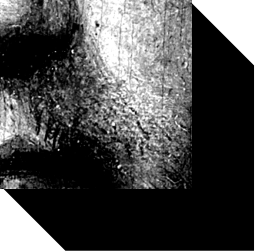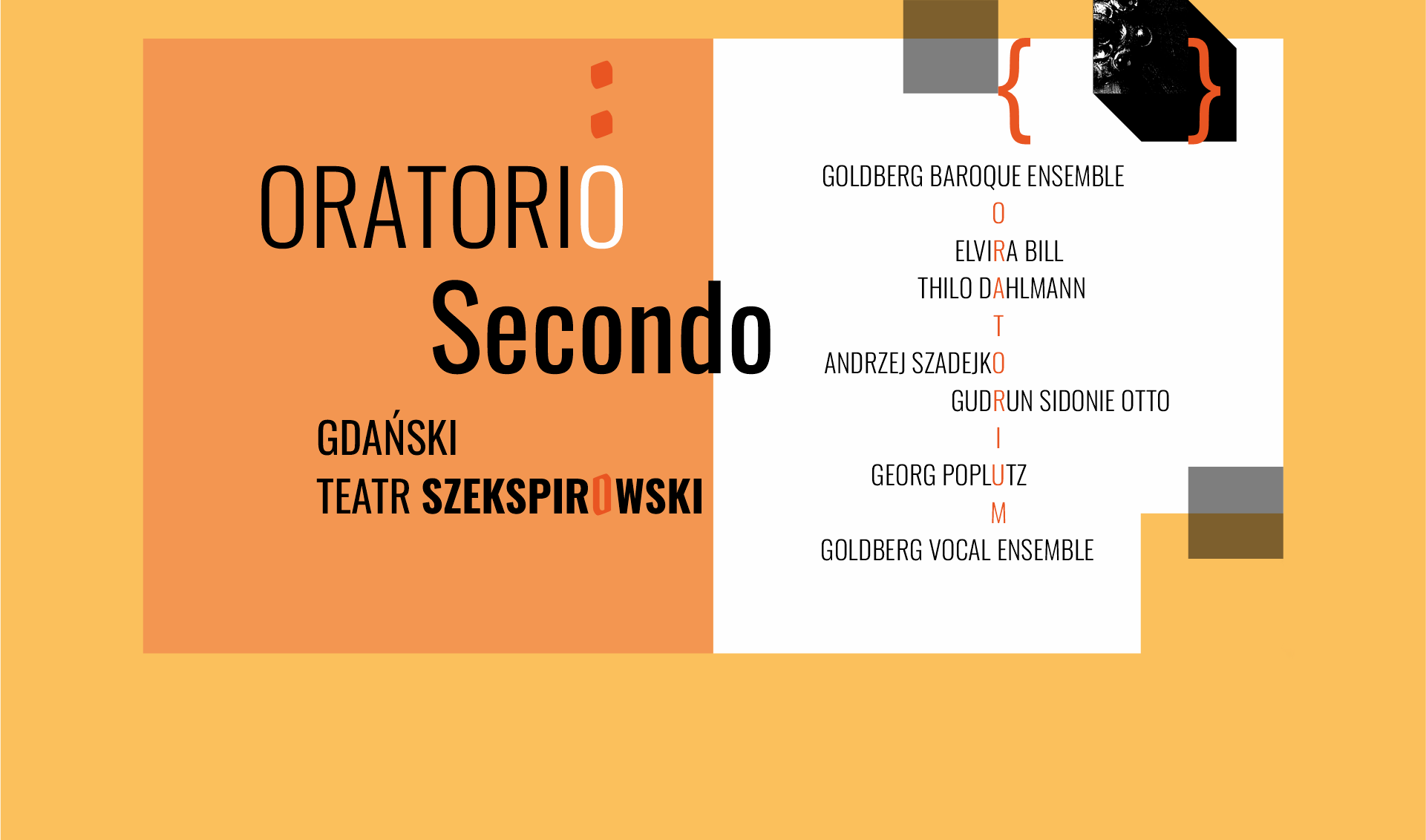

/Idea/
Who are You, Mr. Pucklitz?
Gdansk based musician and composer Johann Daniel Pucklitz (1705-1774) is a very mysterious figure. We know almost nothing about him other than completely basic and piecemeal information about his Gdansk origins from a family with musical traditions and his artistic activity, which shows that he was a well-rounded initiator of various new ideas in his environment, and who became a vestryman at Artus Court in his old age. However, what is most mysterious is the fact that dozens of compositions are preserved in the collection of the PAN Gdansk Library. How it happened that at a time when the monopoly on composing in the city was held by the Kapellmeister Johann Balthasar Christian Freislich, who strongly defended his lucrative privilege, Pucklitz composed and exhibited constantly new works for decades, of which more than sixty have survived to this day. Many of them he presented as part of a completely new form of public concerts, which the City Council agreed to despite the complaints of the Kapellmeister, but most, were compositions presented as part of liturgical activities in any of the churches in Gdansk (St. Elizabeth’s, St. John’s – we don’t know). This is truly astonishing. Could it be that Pucklitz had Freislich’s acquiescence, and if so, why? Perhaps he was his disciple? We are left with only conjecture and hypothesis in this regard for now. The fact is that the autographs of compositions by a member of the city band operating at St. Mary’s Church were bequeathed to the music collection of St. John’s Church.
We also don’t know where or from whom Pucklitz learned to play instruments (which ones?) and composition. His works, unfortunately, do not give us any clear clues, and in fact lead us to hypothesize that the musician must have been overwhelmingly autodidactic, or his artistic personality was so exuberant and independent that he created his own unique musical language despite his studies (with Freislich? Telemann?). To date, I have had the opportunity to perform his ten liturgical works of various sizes. These included cantatas of a few minutes or more, as well as a large Oratorio. From the very first piece I encountered, which was the alto cantata for Christmas and New Year – Ist jemand in Christo. PL-GD Ms. Joh. 246, what was striking from the score was the composer’s extraordinary musical imagination and completely unorthodox approach to colors and forms, which, even in small works, made Pucklitz’s music, although fundamentally grounded in the reality of the Baroque and Galant styles, stand out against not only other composers active at the same time in Gdansk (Freislich, du Grain, later Mohrheim), but also against the background of pan-European works. It is simply difficult to confuse it with any other work by any other composer. Yes, the Gdansk composer used standard forms functioning in the liturgical music of the time – arias, secco and accompagniato recitatives, choruses, ariosos ect. but the content, the way they are realized, the melodic ductus, instrumentation, articulation, ways of using instruments and voices have no counterparts from that period. A French reviewer rightly remarked when describing Puclitz’s Oratorio that the composer could be called a Baroque Ravel, for indeed, extraordinary sensitivity to timbre is perhaps the most important distinguishing feature of this music. Subordinating all other elements of the work to obtaining a particular color that emphasizes the emotion contained in the text seems to have been the most important task the composer from the Motlawa River set for himself. Color – that is, the color of the instrument – Pucklitz does not limit himself to exploiting the “standard” associations associated with particular groups and types of instruments (trumpets and timpani – glory, traverse flutes – intimacy, etc.), but also through their specific, unorthodox juxtaposition (e.g. harpsichord, traverso flute and double bass (!) instead of cello), breaking patterns (e.g. giving the leading role to violas instead of violins) and using modern or “exotic” instruments (glass harp, David’s harp, cymbelstern), as well as using them in non-standard tessituras yields unusual results. The same goes for vocal parts, which in his compositions require quite a bit of technique and attention from everyone – soloists and choristers. We can also attribute the pursuit of the right timbre to the rather complex harmonics of his compositions. The composer juxtaposes simple, not to say sometimes “unsophisticated,” solutions with great disinclination, with passages in which modulations definitely exceed the major-minor language, and the density of harmonic transformations makes the performers dizzy. And although at times it seems that the composer strives from one key to another disregarding the traditional paths, taking shortcuts on harmonic chashas and inflections, which may give the impression of a certain “unskillfulness”, this is, after all, not accidental and, consequently, in combination with other elements of the work, creates a unique mood and effect. I will recall here the beginning of the already mentioned cantata for the New Year, where in the first part it is said that the old year is leaving and the new year is coming. And so the old year is a slow French sarabande in the key of C major, which realistically goes away into oblivion, as all the performers stop singing and playing in turn, after which, in three bars and with the help of three chords that modulate to a new key, we move to a joyful, even swaggering Italian gigi in the key (sic!) C sharp major with the text – New is coming…the musical means are simple, the effect is electrifying, and performance-wise it is extremely demanding (especially from the violinist, who has to play lively melodies in this “modern” key). Also in the chorale arrangements one can hear that the composer consciously operates with sophisticated harmony by “coloring” the text accordingly (this will be heard in the Oratorio many times), achieving a harmonic density comparable only to Bach’s, although realized in a different way. Interestingly, this harmonic variety, which is primarily intended to color the work, also appears in choral arrangements by other Gdansk composers (Gronau, Gleimann), which may indicate a style characteristic of the Gdansk environment. It is worth noting at this point a not inconsiderable element of this music – due to the above-mentioned features, all solo parts, both vocal and instrumental, require considerable technical and musical skills, as if the composer completely did not care whether it is easy or difficult to perform – all that matters is the idea, a consistently carried out idea. This makes us wonder about the level of musical life in eighteenth-century Gdansk, after all, it was then that Pucklitz’s works first resounded, and, most importantly, liked them enough to be repeated. In truth, I am curious about those first performances, and I hope that in ours we will be able to at least partially convey the idea and emotions that inspired the composer.
In the case of Oratorio Secondo of the purely musical side, what also draws attention is the dramaturgy of the work, the text itself, anonymous (perhaps by the Gdansk poet Wasberg, with whom Pucklitz collaborated on other works), in the composer’s intention allowing to show musically two completely different visions of life.
In the first part, the author introduces us to this dark side of humanity, marked by drama, sin, but also stupidity or melancholy, not shying away from cynicism and derision, when a chorus of rubbishy sinners sings – nuże, let’s show everyone how to have fun, and whoever is not with us, we’ll laugh at him, so that soon afterwards already as the damned lament and cry for solace in the fires of hell. This vision of unreflective sybarites is preceded not only by a long motet, in which the chorus systematically and in detail, and thus somewhat fatalistically, expounds the idea of coming to terms with the fact that it is not for us to decide about death and life, that it is all in God’s hands, But it also all begins with an elaborate three-part instrumental symphony, which is a kind of overture, almost as if it were an opera (forbidden in Gdansk at the time, after all), and whose character is as secular as possible, dancing, completely unannouncing the drama about to be presented. The sequence of events, then, is as follows – first, fifteen minutes of ear-pleasing instrumental music, which could freely ring out in Artus Court to the sound of beer-filled conversations. Then, almost as if in a Greek tragedy, the chorus gives itself up to God on our behalf for 10 minutes, so that without any further introductions the first entrance of the soloist – the bass – announces to us that it is our destiny to die, followed by a half-hour vision dissected into roles and regularly punctuated by commentary from the “ancient” chorus, depicting those who do not accept this and consistently roll down into the depths of hell, which does not soothe their longings, desires, pain. And lo and behold, at the end of the first movement, when the sinners have already been plunged into hell, the choir bids them farewell with a little-known chorale stanza about the fact that their torment will end only when (sic!) God ceases to exist…with this bold thought the composer leaves us for a break.
The second part introduces a completely different mood. Although the text also mentions death, but it is presented as an element of life, almost joyfully anticipated, and certainly not as a reason for fear and sadness. The beginning of the second movement lacks an instrumental overture, but a choral motet appears once again, which semantically introduces encouragement and trust in God’s plans, rather than resignation caused by the prospect of death. By formally referring to the first motet, the composer achieves the effect of continuing a certain philosophical argument, which, after the counter-arguments in the first movement, will now be properly explained. And while it might seem that depicting dramatic events would be musically more interesting and, above all, easier, it is in the second part of the Oratorio, entirely devoted to the attitudes of God-fearing Christians, that Pucklitz demonstrates his extraordinary musical artistry by “illuminating and illuminating” instrumentally the various aspects of Christian joy and trust in the most sublime manner, reaching for unusual intruments such as a glass harp symbolizing death, a trumpet in polonaise rhythm symbolizing God’s glory, or a harp of David and cymbeline having Christmas associations, and symbolizing here the parousia. As in the first movement, the dramatic turns are unexpected and, very interestingly, formally mirror the first movement. That one began with sacred music of a dance and song character, while the second part and the entire work ends with heavenly dance music to the tune of “In dulci jubilo,” one of the oldest Christian carols, which is all the more unexpected because this final part is preceded by an “earthly” finale, namely a polonaise, which completely closes the work emotionally. The composer knocks us out of our “earthly” expectations in this subtle and absolutely fantastic musical way, showing us that most likely the end and salvation will look completely different than we imagine. I’ll admit that I don’t know of another Baroque Oratorio work like this, which talks about ultimate matters in such an unorthodox way.
These are just a few loose reflections on Pucklitz’s magnificent work, in fact, a separate essay could be written about each of the more than thirty parts of this work, and so it will probably be in the future, but for now let’s try to dive into the world of emotions and ideas of Gdansk’s eighteenth-century artists. This will not be easy, because this is a very complex world, multi-layered and requiring intellectual effort, but at the same time before it is incredibly attractive and stimulating. After almost three hundred years, the music that spoke to our ancestors will now speak to us, hopefully resonating as strongly as it did then.
As a matter of fact, in many aspects of life we still struggle with the same dilemmas, worries and dramas as those depicted in Pucklitz’s work. This is probably why it is so timely and moving. I suggest that we abandon all comparative templates and notions and surrender to Pucklitz’s musical thought, and very soon we will be overwhelmed by an irresistible impression of participation in the eternal metaphysical discourse – what is more worthwhile – to be or to have; to trust more in someone (God, another person) or in oneself; to use at will to satiate the senses or to seek the joy of the soul; to fear the prospect of death as an irrevocable end, or to look forward to it with hope as a transfer to another dimension. May these evenings at the Gdansk Shakespeare Theatre stimulate us to just such pondering.
/TICKETS/
17.11.2023 | 7 PM
18.11.2023 | 7 PM
19.11.2023 | 6 PM


The Gdańsk Shakespeare Theatre was established on the site where, in the 17th century, the Fencing School building operated, modeled after London’s Fortune Theatre. It was the first public theatre of the then Republic. Equipped with an Elizabethan-style stage and similar to many English theatres of the Elizabethan era, it served both for fencing exercises and competitions, as well as for staging performances. Traveling English actors regularly visited the Gdańsk theatre to stage plays by English playwrights, including Shakespeare. The building of the current theatre stands on the site of the 17th-century original.
The interior of the theatre’s Main Hall is a reconstruction of the former Elizabethan theatre in Gdańsk. Thanks to modern technology, the interior is adaptable – it can be transformed into various types of stages: classic Italian, Elizabethan (extended towards the audience, where the ground floor audience stands around the stage), arena stage, and others. The retractable roof is another marvel of technology, allowing performances in daylight, in the spirit of the Renaissance tradition.
The design was created by an Italian – Renato Rizzi, who placed the wooden interior inside a heavy brick structure. The theatre opened in September 2014. The roof, which opens in 3 minutes, allows performances in daylight under the open sky (in “Elizabethan” conditions).
The theatre has a volume of over 53,000 m³, a total area of over 12,000 m², and a usable area of almost 8,000 m². The building incorporates technical solutions such as a movable pit system for the stage and audience. Depending on the stage and audience layout, the interior is adaptable, and the theatre can accommodate up to 600 people (in theatre setting) or up to 1,000 people (in concert setting).
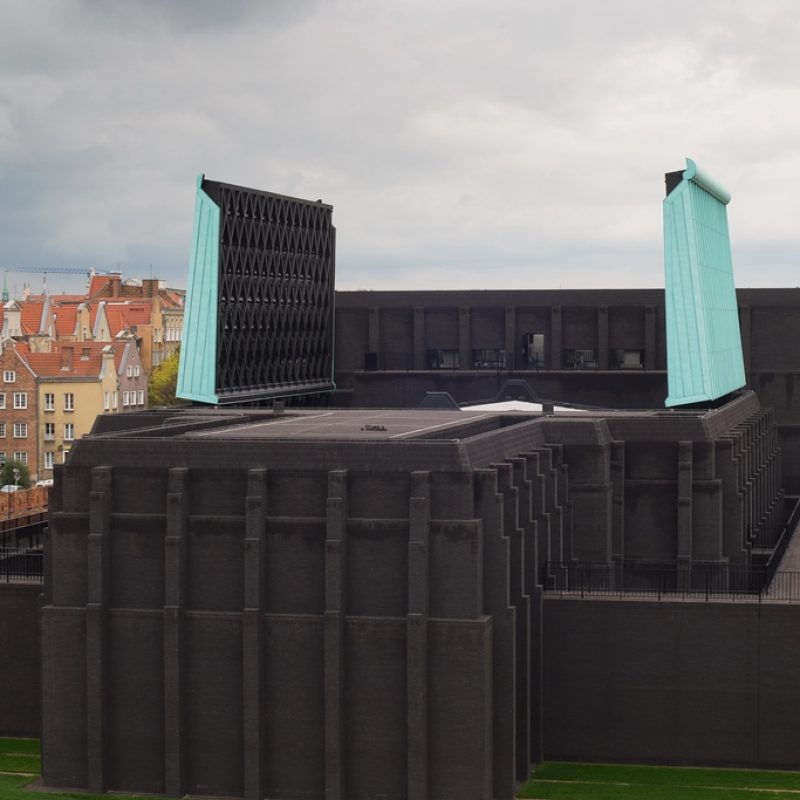
/Work/
Pucklitz Johann Daniel
Prints:
Oratorio. Der sehr unterschiederie Wandel u. trd der Gottlosen u. Gottes [Textbuch] Danzig 1747. PL-GD
Zwei Ankündigungen von Aufführungen seines Oratoriums „Der segr unterschiedene Wandel und Tod der Gottlosen und Gottesfürchtigen“ zu Danzig am 11. und 21. Dezember [1747.]. PL-GD
Manuscripts:
„Am Ersten Sonntag nach der Erscheinung Christi (Der Herr ist in seinen heiligen Tempel).“ Part., SATB, Vlo. 1. 2, Vla., Fondam., Org. p. transp. PL-GD Ms. Joh. 227.
„Am 2. Sonntag nach dem Fest d. Erscheinung Christi (Du hast den guten Wein).“ Part., SATB, Vlo. 1. 2, Vla., Fondam., Org. p. transp. PL-GD Ms. Joh. 228.
„Am 3. Sonntag nach dem Fest der Erscheinung Christi (Dein Schade ist verzweifelt böse).“ Part., SATB, Ob. solo, Vlo. 1. 2, Vla., Org. p. transp. PL-GD Ms. Joh. 229.
„Am 4ten Sonntag nach dem Fest der Erscheinung Christi (Erwecke dich Herr).“ Part., SATB, Vlo. 1. 2, Vla., Org. p. transp. PL-GD Ms. Joh. 230.
„Am 5ten Sonntag nach dem Fest der Erscheinung Christi oder Sexagesima (Herr hast du nicht guten Samen).“ Part., SATB, Vlo. 1. 2, Vla., Org. p. transp. PL-GD Ms. Joh. 231.
“Sexagesima. Cantata von dem rechten Gebrauch des Wortes Gottes (Wohl dem, der mit Lust). CATB, 2 Vli., Vla., Ob. obligato e Fondam.“ Part. u. Stimmen. PL-GD Ms. Joh. 232.
„In Festo Trinitatis. Angenehmer Gnaden Fluss. Concerto à 4 v. e Tromboni, dui Corni e Clarini e Tymp., due Vli., Vla. e Fondam.“ Part. u. Stimmen. PL-GD Ms. Joh. 233.
“Cantata am dritten Sontage nach Trinitatis (Dieser nimmt die Sünder an) a 4 v., due Vli., Vla. e Fondam.“ Part. u. Stimmen. PL-GD Ms. Joh. 234.
“Concerto post 22 Trin. Kehre wieder a 4 v., Vlo. 1 e Travers., Vlo. 2, Vla., Vlc. obligato e Fondam.“ Part. u. Stimmen. PL-GD Ms. Joh. 235.
„Post 25 Trin. Concerto Wache auf der du schläffest a 5 v., 2 Vli., Vla., Vlc. oblig., CATB, Trombona e Fondam.“ Part. u. Stimmen. PL-GD Ms. Joh. 236.
“Dui Concerti in Partitura 26 et 27 post Trin.” I. “Concerto 26 post Trin. Der Herr wird mit einem Feld Geschrey a 4 v. et 4 Tromboni, 1 Clarino et Fondam.“ II. “Concerto 27 post Trin. Ich will in allen Sachen. CATB, Clarino, due Vli., Vla., Basson obligato è Fondam.” Part. u. Stimmen. PL-GD Ms. Joh. 237.
PL-GD Ms. Joh. 238 – Nur die Stimme für gros.se Orgel.
PL-GD Ms. Joh. 239 – Die Singstimmee fehlen.
„Cantata in Fest Pasch. Erstanden ist der heylge Christ à SATB, 2 Vli., Vla., 2 Ob., Basson si pl., Vlono. obligato, ripieni 4 Tromboni, 2 Clarini, Tymp. e Org.“ Part. u. Stimmen. PL-GD Ms. Joh. 240.
“Concert ex D # auf Ostern (Erstanden ist der heilige Krist) à 2 Chör. CATB, 2 Oboen, 2 Vli., Vla.; CATB, 2 Clarini e Tymp., 2 Oboes si placet. Taille e basson, à 4 Tromboni rip., e Fondam.“ (Verschieden von Ms. Joh. 240.) Part. u. Stimmen. PL-GD Ms. Joh. 241.
„Estomihi. Cantata Die Aufopfrung Sein Selbst (Höchster Priester der du dich) a ZTB, 2 Violetti, 2 Oboe d’amour, Traversie obligato, Clarino con sordino e Fondam.“ Part. u. Stimmen. PL-GD Ms. Joh. 242.
„Am Sonntag Septuagesima (Nimm was dein ist)“ Part., SATB, Vlo. 1. 2, Vla., Org. per transp. PL-GD Ms. Joh. 243.
„Concerto (ex Fis moll) Befiehl dem Herrn deine Wege à CATB, Vlo. piccolo concertato, due Vli. obligato, Vla., Vlc. obligato è Fondam.” Part. u. Stimmen. PL-GD Ms. Joh. 244.
„Cantata in Festo Pentecostes II Über die Liebe Gottes in der Sendung seines Sohnes (Also hat Gott die Welt geliebt) à 4 v., CATB, 2 Vli. e Vla., Clarino e Fondam.“ Part. u. Stimmen. PL-GD Ms. Joh. 245.
„In festo novi anni et nativitatis Christi. Ist jemand in Christo. A solo, 2 Vli. e Fondam.” Part. u. Stimmen. PL-GD Ms. Joh. 246.
„Choral – Cantate Herr Jesu Christ wahrer Mensch und Gott für Gesangstimmen und Instrumente.“ Part. PL-GD Ms. Joh. 247.
“Wachet auf ruft uns die Stimme. Choral – Kantate für Singstimmen und Instrumente.“ Part. PL-GD Ms. Joh. 248.
“Kantate wir haben einen Fürsprecher für Singstimmen und Instrumente.“ Part. PL-GD Ms. Joh. 249.
“Choral (- Kantate: Ach Gott und Herr wie gross und schwer)” für Singstimmen und Instrumente.“ Part. PL-GD Ms. Joh. 250.
“Cantata Freude dich Dantzig. Vlo. obligato, 2 Vli., Canto C. C. è Fondam. Ao. 1737 in Exsamina (!) Sancto Trin.” Part. PL-GD Ms. Joh. 251.
“Sinfonia et Concerto Bey Einweyhung der neuen Orgel am Lazareth, Nach – Mittage vor und nach der Feld – Predigt aufgeführt der ersten Sontag nach Trinitatis. Von den in 2 Abteilungen geteilten Komposition „vor der Predigt“ (Ihr die ihr eure Lust am Herrn habt) ist erhalten Part. (zu Anfang defekt) und ausserdem an Instrumentalstimmen Vol. 1.2 , Vla.: von der Komposition „nach der Predigt“ (Saget Dank allezeit) Part. und Instrumentalstimmen. Eine Stimme „Pro directorio in der Orgel“ enthält beide Kompositionen. PL-GD Ms. Joh. 252.
“Choral – Kantate Jesu meines Lebens Leben für Singstimmen und Instrumente.“ Part. PL-GD Ms. Joh. 253
“Choral – Kantate Heut triumphiret Gottes Sohn für Singstimmen und Instrumente.“ Part. PL-GD Ms. Joh. 254.
Kantate “Feria 3 Nativit. Christi” Ich habe dich je und je geliebet für B – solo und Instrumente. Part. PL-GD Ms. Joh. 255.
Passions – Kantate: “Ein Lämmlein geht und trägt die Schuld für Singstimmen und Instrumente.“ Part. PL-GD Ms. Joh. 256.
4 Kantaten für Singstimmen und Instrumente, sämtlch von. J. D. Pucklitz. Part.
Bl. 1 “Nun komm der Heiden Heiland” (Choral – Kantate). Bl. 3 „Cantata bei dem Examen zur Hl. 3faltigkeit“. (In Gottes Gnaden Meer.) Bl. 5 Trauerkantate auf den Tod eines gewissen „Kirchen – Vaters“ Daenke (vgl. das Bass – Rezitativ), zu Anfang offenbar unvollständig; Bl. 12 (zu Anfang defekt) Kantate nach dem Ableben des Danziger Bürgermeisters (Gabriel v.) Bömeln bei dem Amtsantritt des (Joh. Gottfried v.) Diesseldorf als Protoscholarchen des Danziger Gymnasiums. PL-GD Ms. Joh. 257.
“Motetta ex F # Kyrie eleison a 4 v., (Vlo. 1. 2, Vla., Vlono., Bassono, Cornu de chasse 1. 2,) e Fondam., nach dem a b c zur Haus – Andacht kurz u. einfältig ausgeführt von…“. Part. und Stimmen. PL-GD Ms. Joh. 258.
“Ein kleines Motettchen (Jesus Christus hat uns geliebet) in aller Kürze und Einfalt entworfen und musicalisch ausgeführet von…“. Part., SATB, Vlo. 1. 2, Vla., SATB Trombono, Org. p. transp. PL-GD Ms. Joh. 259.
5 Motetten für 4, 5 oder 6 Stimmen und Instrumente, bezeichnet als Nr. 2 – 6. Überall Part. und Stimmen. Nr. 2 Jauchzet dem Herrn alle Welt ex F #. Nr. 3 Herr wer wird wohnen in deinen Hütten ex E #. Nr. 4 Jauchzet Gott alle Lande ex D #. Nr. 5 Ich bin ja Herr in deiner Macht ex B #. Nr. 6 Woher nehmen wir Brot ex H b. PL-GD Ms. Joh. 260.
„Aria. Also hat Gott die Welt geliebet Fer. Pent. 2do à 4 v. e instrumenti. NB DiePoesie von Herrn Erdmann Neumeister”. Stimmen. PL-GD Ms. Joh. 261.
“Concerto ex C – dur Denen zu Zion wird ein Erlöser a 4 v., 2 Vli. e Fondam., Clarino et Oboe si pl. NB in S. Salvador (zu Danzig) 1758 am zweyten Feyertage in Weynachten.“ Part. und Stimmen. Vgl. Ms. Joh. 349. PL-GD Ms. Joh. 262.
“Concerto Festo Novi Anni.Die Himmel erzehlen die Ehre Gottes. CATB e Instrumenti e Fondam.“ Vereinfachte Part. und Stimmen. PL-GD Ms. Joh. 267
“Dictum 1. Pet. 5 v. 8 (Seyd nüchtern und wachet) à 3“, d. h. für 2 S und B mit Begleitung von Vlo. 1. 2, Ob. d’amour 1. 2, Fondam., Org. p. transp. Part. und Stimmen. PL-GD Ms. Joh. 269.
Kantate “Feria 2da Nativit. Christi. Denen zu zion wird ein Erlöser kommen für 4 Stimmen und Instrumente.“ SATB, Ob. 1. 2, Vlono., Vlc., Bomber, Tymp. Dieselbe Kantate im Autograph siehe Ms. Joh. 262. PL-GD Ms. Joh. 349.
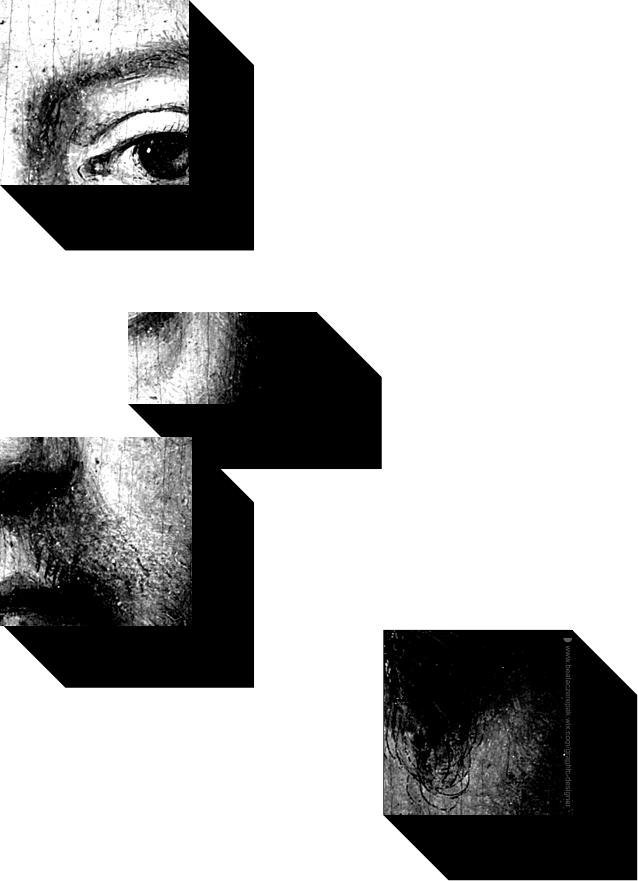
/PATRONS/
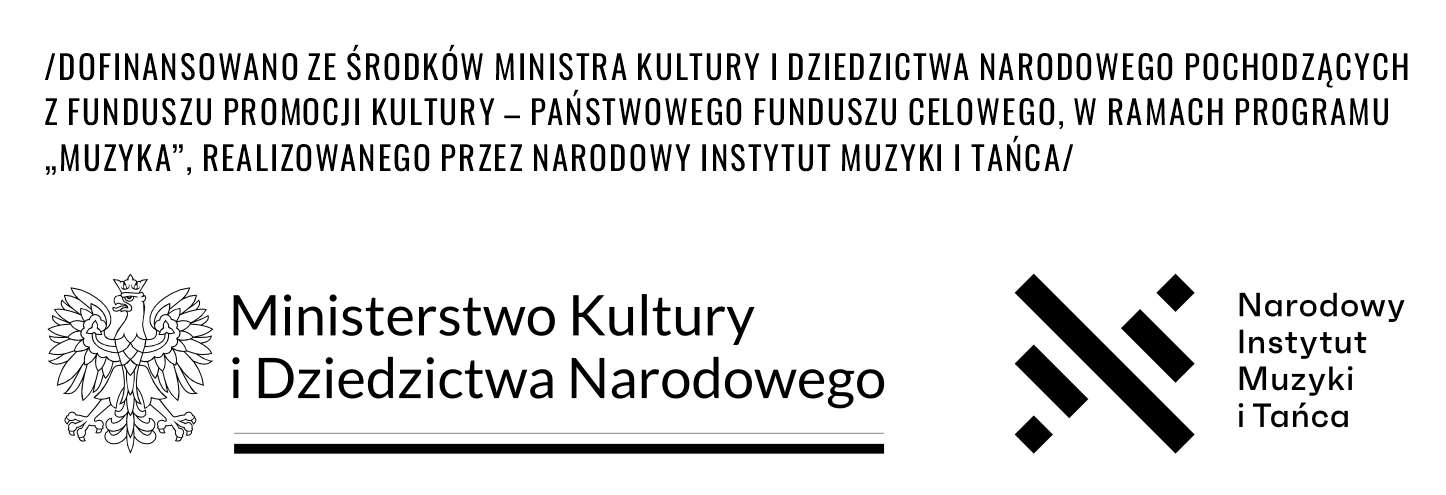


/PARTNERS/

/MEDIA PATRON/


